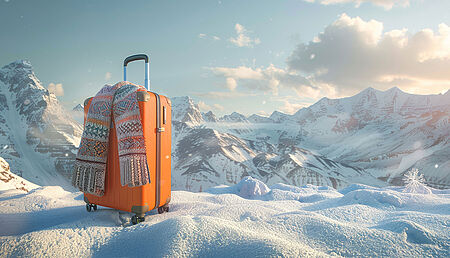
Everyday IP: Sink your teeth into dental patents
March 6 is National Dentist's Day in the United States – a celebration of the people who work tirelessly to keep us smiling. Although it may not be on your mind while sitting in the dentist's chair, these cavity conquerors owe much of their success to a universe of inventions, innovations and technical evolutions, all deeply rooted in Intellectual Property (IP) history.
So, take this opportunity to thank your dentist for their handiwork – even if through gritted teeth – and thank a patent for taking off some of the bite.
Mechanics or medics?
It is no surprise that modern dentistry boasts a long list of IP protections on everything from model teeth structures to dental training kits. After all, the profession was once viewed more as the work of mechanics than doctors, and nothing demonstrates mechanical excellence as well as holding patents.
However, this also means many of the earliest dental patents seem fundamentally different from modern inventions. These antecedents were often designed to address damage as one might fix a machine, while, thankfully, recent patents are concerned with treating a complicated biological system. For example, a 1789 patent granted to Frenchman Nicolas DuBois de Chémant protected porcelain teeth – essentially a "replacement part." Similarly, an early dental tool patent, awarded to George Green in 1868, was for a drill powered by compressed air – something eerily reminiscent of pneumatic drills found in today's home repair stores. (And in case one celebration is not thrilling enough, in honor of Green's later electric version, January 26 is Dental Drill Appreciation Day.)

Loved by dentists and hated by everyone else, there is no denying the usefulness of dental drills. Relatively simple in concept, their variety of heads can remove damaged areas of teeth with a relatively light touch. So, the next time you hear the drill's high-pitched whine, remind yourself how much worse the procedure would be without it.
But is this just a reflection of the limited scientific understanding of the time? Maybe not. After all, the human body has long been compared to a machine. Perhaps it is more productive to think of early dentistry as a precursor to the rational approach to therapeutics that now characterizes the medical world. Admittedly, it was somewhat lacking in the compassion department.
Brushing up on toothbrushes
Of course, it would be impossible to discuss dentistry without touching on one of its most defining instruments: the humble toothbrush.
Although the concept dates back to at least 3000 BC, when people chewed on frayed sticks, the more familiar form of the toothbrush did not appear until around 1780. Inspiration came to Englishman William Addis as he served out a prison sentence, carving a bone handle and affixing boar bristles to its top. Almost eight decades later, American H.N. Wadsworth patented an improved version that "[separated] the bunches of bristles more than in the common brush, so as to give more elasticity and enable them to enter between the interstices of the teeth." Nonetheless, it took the advent of nylon in 1935 and its use as a bristle material to get people to clean up their dental hygiene act.
Since then, however, a fascination with toothbrushing technology has become almost omnipresent. Patent applications in this area tell a very clear story: We may have accepted this hygienic necessity, but we are still working on ways to make it more palatable.

Where other inmates might fashion makeshift tools for escape, William Addis turned his penal ingenuity to more altruistic goals. After completing his sentence for inciting a riot, he refined his personal hygiene prototype and established a company still in business today – Wisdom Toothbrushes in the United Kingdom.
For example, the arrival of motor-driven toothbrushes was a significant step forward for dental toolkits everywhere. This did not just eliminate some of the manual work of brushing and improve all-around effectiveness, but it also paved the way for additional innovations such as smart toothbrushes that estimate which areas of the mouth have been brushed. Technological evolution in this area has gone so far as to introduce "a system for determining the orientation of the toothbrush in the mouth of a user relative to the earth."
Many such inventions, while useful for nearly anyone with teeth, are developed to promote better dental hygiene in children. This goal has motivated a multitude of patents, including those for musical toothbrushes, illuminated toothbrushes and even methods of modifying brushing behavior.
A place for paste
The history of toothpaste is perhaps a bit more difficult to track, but not because the substance is new. In fact, toothpaste has its roots as far back as 4000 BC, though it did not always have its familiar consistency. Before mass production, dental experts in the 19th century created their own recipes for "toothpowder" or "dentifrice mixtures," often sold in ceramic pots.
However, that is not to say that the toothpaste industry is empty of innovation. A 1912 patent owned by William Edward Danner described a toothpowder manufactured into granules that break down when moistened — a solution for the inconvenience and waste of scattering powder during use. Another patent from 1948 concerned nonvolatile flavoring methods that did not dissipate quickly after opening, foreshadowing the countless toothpaste flavors that would become available with time. Other IP rights have focused on the cleaning ingredients in the concoction, such as sodium bicarbonate and herbal extracts. Toothpaste containers, too, are a subject of constant innovation, one example being "plural compartment assemblies" for dual-dispensed products.
Tooth solutions
Even today, dental health is often a struggle, not only due to inconsistent hygiene habits but also the unavoidable impacts of age, injuries, prescription drug side effects and more. Fortunately, a variety of inventions make it possible to address tooth damage and loss.

Another William, William Nebergall, is credited with inventing the modern toothpaste. The inorganic chemist collaborated with Joseph Muhler to uncover the potential of stannous fluoride to prevent dental decay. Eventually, Nebergall was able to match the compound with an appropriate abrasive to earn his historic patent.
Perhaps the best example is dentures, as famously worn by the first president of the United States, George Washington. His less-than-wholesome set was constructed with lead, gold and even animal teeth, but — contrary to popular belief — not wood. Progress in this area has come a long way since those poisonous times, with plastic denture bases, improved prosthetic supports, magnetic aligning and other creative inventions. Even the underlying processes themselves have received IP protection, for example, a patent on producing dental restorations, which acts as one of many bridges between earlier dentures and more modern solutions.
Pet plaque and critter cavities
Yet, not just human teeth benefit from dentistry and the IP framework that protects it. Animals, too, have been the reason behind many ingenious inventions and patents, and as veterinary dentistry is a comparatively new field, innovations here have the benefit of medical expertise that did not exist when equivalent human treatments were pioneered.
Many patents in this area combine a methodology with a unique device, including a laser for treating periodontal disease in small animals and a bitable toothbrush for dogs. Unlike your own dentist's apparatus, many of these inventions must also take species-specific needs into account. For example, an equine dental float adapter has very little in common with a teething and teeth cleaning device for cats despite belonging to the same general practice. Challenges like these are part of what makes IP an ongoing story — one that adapts to society's interests and needs, from our own health to that of our furry companions.
Dentistry would not be where it is today without a little help from IP protections, so what could a patent do for you? Contact us to learn more about how Dennemeyer's patent experts can help put a smile on your face.
Filed in

IP infringement disputes abound in the film industry but some are more dramatic than others. Explore the unusual IP cases spawned from prominent movies.



